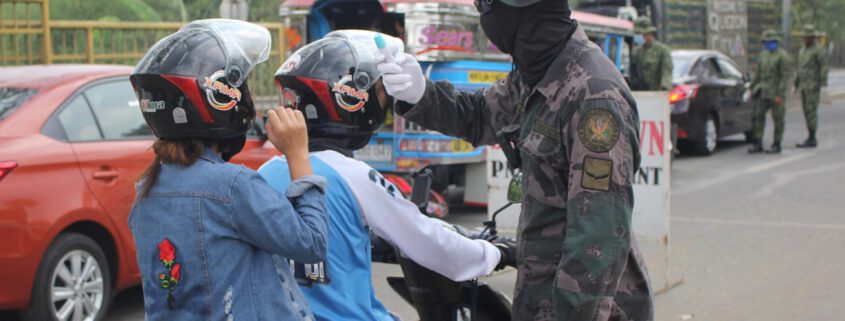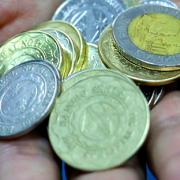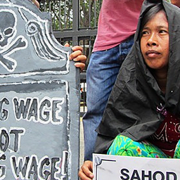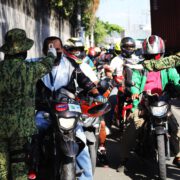GCQ Reality Check
Struggling with the dilemma for about a month now – caught between the lack of science and intense pressure from big business to continue profit-making – the Duterte government is about to decide to transition the country to a general community quarantine (GCQ). Its narrative has been apparent – it is winning against the coronavirus and is ready to pick up from the economic slump.
Before you obey the government when it says it is alright to go out now, please answer the following questions truthfully.
1. Have we flattened the curve? No one really knows. The health department has cited the doubling time slowing down from 3 to 5.5 days and wrongly used it as proxy indicator that the government is winning the curve war. Up to this point, we know nothing. We know about daily new cases, like we had 350 new cases on May 26, the highest since April 7. We know about 14,669 cases nationwide and our high 6% mortality rate. But these metrics are based on a government pandemic response where there is only limited testing. Our knowledge thus can only be that – limited.
The curve is all about the infection rate of the virus – any effort to flatten it is futile if there is no mass testing, contact tracing, isolation, and quarantine. We hoped to have that sane health response in that order, but government simply imposed a hard lockdown, euphemized as enhanced community quarantine (ECQ), without mass testing and strengthening the rest of the health system.
Presidential spokesperson Harry Roque quibbling over the semantics of “mass testing” is also a pathetic attempt to tiptoe around the issue. There is no such thing as mass testing, Malacañang would repeatedly say, but would later clarify that it was referring to government policy on mass testing, a much worse admission actually. Then later, government would go by the “we-don’t-have-the-money-for-that” narrative, which only makes apparent that the overarching governance principle of the Duterte administration during COVID or otherwise is to evade and default on state responsibility.
Curves and waves – these have only brought down the credibility not only of the health department but of the entire inter-agency task force. Such mass confusion shouldn’t even have happened while we are in the middle of the pandemic. But yes, that’s where we are – almost three months of lockdown and we are still debating on terms.
2. Have we increased our testing capacity? Again, in this regard, Malacañang has made another confusing claim that we have already reached 30,000 per day testing capacity. All we know is that we only have 42 testing centers nationwide, not all were even operational from the beginning of the lockdown. The highest number that these centers have tested per day is 10,841 unique individuals. From May 16 to May 25, the government has only tested a daily average of 8,077 samples. The health department also has a backlog of 6,835 for validation of positive results, which are not yet included in the 14,669 confirmed cases. There are 818,338 remaining kits on hand, which may not refer to the number of tests that may be done because laboratories count all the supplies they have to make one test. In any case, what use is it that we have the kits if government still won’t have a directed program of free mass testing?
3. Have we strengthened the health system? The country has only 1,845 COVID-19 referral and accepting hospitals, and most of these are private hospitals, while the Department of Health (DOH) accounts for only 73 of these. There are only a reported 72 quarantine facilities nationwide, and these are even operating under capacities. Some of the so-called quarantine facilities assigned for returning overseas Filipino workers are also reportedly crowded and lacking medical services. Obviously, the DOH is more inclined towards personal or home quarantining than building public facilities.
There are 478 ICU beds, 2,356 isolation beds, 972 ward beds, and 816 mechanical ventilators in the public health system of the National Capital Region (NCR). On the average, around 56% of these beds are currently occupied based on DOH data, while 28% of the mechanical ventilators are being used. The NCR has 9,481 confirmed cases – 6,312 are active, of which 823 have been admitted while the majority 5,373 are still pending status. To put simply, if all active cases had to be admitted in the public hospitals, which is the ideal treatment if only we had many quarantine facilities, NCR with a total of only 3,806 beds of different uses would be swamped.
What is unspoken is the cost of consultation and hospitalization that pushes patients away to just go home without getting any medical attention. The main weakness of the Philippine health system is that the government has a universal health care law that is insurance-driven instead of focused on direct service provision. It is a universal misnomer that is more inclined to ensure the profits of private hospitals instead of socializing health care. For COVID-19, PhilHealth can only provide Php14,000 per worker for admission and referral and at least Php43,997-786,384 for confinement, which are not enough. This affliction of a commercialized and privatized health system has been manifestly bared during the coronavirus crisis.
The Philippines has the highest proportion of infected health frontliners in the region, reaching about 17% of total infected population. This worries the World Health Organization because the country apparently is an outlier in a region that registers only a 2-3% proportion of infected health frontliners. This tragedy can only be explained by the lack of personal protective equipment (PPE) for our frontliners, government’s delayed and limited procurement of PPE, lack of DOH guidelines and training, and the frontliners being overburdened. Even the plan to hire and beef up the number of health workers by hundreds of thousands is not attracting applicants, what with government offering the same low compensation levels and thankless jobs.
Ready for the GCQ? If you don’t know the answers because government has failed to inform you, or if you indeed know the answers as government has failed to take action, by all means go out and make government answerable. #
= = = = =
Kodao publishes IBON articles as part of a content-sharing agreement.







